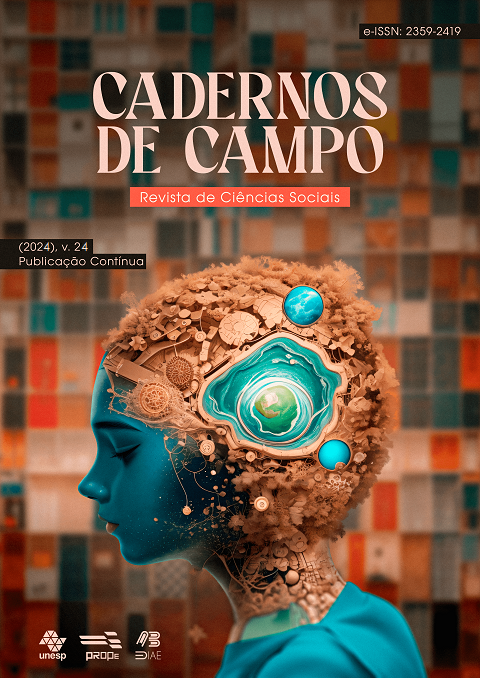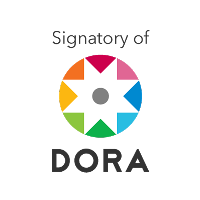Contribuições da neurociência na mensuração do impacto emocional em campanhas publicitária com o uso do EEG
DOI:
https://doi.org/10.47284/cdc.v24i00.16662Palavras-chave:
Neurociência do Consumo, Neuromarketing, Impacto Comunicacional, Publicidade, EEGResumo
A mensuração de impacto publicitário sempre foi um desafio para o campo de estudo. A neurociência do consumo contribui, nesse caso, com soluções científicas importantes quando traz métricas avaliativas para os processos de atenção e interesse. Este artigo apresenta a análise de um filme publicitário no segmento de cerveja utilizando EEG (eletroencefalografia) de baixa resolução, visando a avaliação do impacto emocional quando os pesquisados são expostos ao estímulo publicitário. O avanço da tecnologia Brain Computer Interface levou a dispositivos que conseguem capturar as frequências elétricas superficiais do cérebro e oferecessem uma oportunidade para utilização destes dados na avaliação da propaganda. Os resultados obtidos com o estudo demonstram que foi possível capturar efeitos significativos nas atividades elétricas do cérebro entre grupos de consumidores, contribuindo para a tomada de decisão mercadológica. A proposta desta pesquisa é demonstrar diferentes possibilidades de análises métricas publicitárias, quando aplicadas perspectivas multidisciplinares, neste caso com o uso da neurobiologia no campo das ciências sociais.
Downloads
Referências
ASTOLFI, L. et al. The track of brain activity during the observation of TV commercials with the high-resolution EEG technology. Computational intelligence and neuroscience, [S. l.], v. 2009, p. 652078, 2009. Disponível em: http://www.pubmedcentral.nih.gov/articlerender.fcgi?artid=2699882&tool=pmcentrez&rendertype=abstract. Acesso em: 12 jun. 2014.
BAIRD, T. R.; WAHLERS, R. G.; COOPER, C. K. Non-recognition of print advertising : emotion Arousal and gender effects. Journal of Marketing Communications, [S. l.], v. 13, n. 1, p. 39–57, 2007.
BARNES, S.; PRESSEY, A. An examination of market maven behaviour across real-life, web and virtual world marketing channels: in search of the “meta maven”? Psychology & Marketing, [S. l.], v. 25, n. February 2008, p. 197–232, 2008.
BELANCHE, D.; FLAVIÁN, C. The Influence of Arousal on Advertising Effectiveness Literature review. In: INTERNATIONAL CONFERENCE ON METHODS AND TECHNIQUES IN BEHAVIORAL RESEARCH, 9., 2014. Anais [...]. [S. l.: s. n.], 2014. p. 27–31.
BOZKURT, F. Effectiveness Of Classroom Lighting Colors Toward Students’ Attention And Meditation Extracted From Brainwaves. Journal of Educational and Instructional Studies in The World, [S. l.], v. 4, n. 2, p. 6–12, 2014.
CHO, O.; KIM, J.; LEE, S. A Design of BCI based Environment System for Immersion of FPS Game. International Journal of Multimedia and Ubiquitous Engineering, [S. l.], v. 9, n. 5, p. 149–154, 2014.
CORREIA, MÁRCIO ANDRÉ LOPES. A publicidade como mecanismo para criar valor a uma marca. 2015. 97 f. Dissertação (Mestrado) - Universidade de Tras-os-Montes e Alto Douro, Vila Real, Portugal, 2015. Disponível em: https://www.proquest.com/openview/0e1c0007beb6c8bd4f4e842c004c13d8/1?pq-origsite=gscholar&cbl=2026366&diss=y. Acesso em: 10 ago. 2023.
CROWLEY, K. et al. Evaluating a Brain-Computer Interface to Categorise Human Emotional Response. In: INTERNATIONAL CONFERENCE ON ADVANCED LEARNING TECHNOLOGIES, 10., 2010. Anais […]. [S. l.: s. n.], 2010. p. 2–4.
DUCAO, A.; TSENG, T.; KAPRI, A. VON. Transparent : Brain Computer Interface and Social Architecture. Siggraph, [S. l.], v. 5, n. 9, p. 4503, 2012.
DU PLESSIS, E. Recognition versus recall. Journal of Advertising Research, v. 34, n. 3, p. 75+, maio/jun. 1994. Disponível em : https://link.gale.com/apps/doc/A15687799/AONE?u=anon~9adde640&sid=googleScholar&xid=22cba453. Acesso em: 10 ago. 2023.
FINN, P. R. Motivation, working memory and decision making: a cognitive-motivacional theory of personality vulnerability ro alcoholism. Behavioral and Cognitive Neuroscience Reviews, v. 1, n. 3, p. 183–205, 2001.
FOLGIERI, R.; LUCCHIARI, C.; MARINI, D. Analysis of brain activity and response to colour stimuli during learning tasks: an EEG study. In: ESCHBACH, R.; MARCU, G. G.; RIZZI, A. (ed.). Color Imaging XVIII: Displaying, Processing, Hardcopy, and Application. [S. l.: s. n.], 2013. v. 8652, p.86520I. Disponível em: http://proceedings.spiedigitallibrary.org/proceeding.aspx?doi=10.1117/12.2007616. Acesso em: 4 jul. 2014.
FRAZÃO, A.; FERNANDO, G. A construção da atenção a partir da memória. Revista Brasileira de Psiquiatria, [S. l.], v. 25, n. Supl II, p. 12–20, 2003.
KATONA, J. et al. Evaluation of the NeuroSky MindFlex EEG headset brain waves data. In: INTERNATIONAL SYMPOSIUM ON APPLIED MACHINE INTELLIGENCE AND INFORMATICS, 19., 2014. Anais [...]. [S. l.: s. n.], 2014. p. 91–94. Ieee. Disponível em: http://ieeexplore.ieee.org/lpdocs/epic03/wrapper.htm?arnumber=6822382. Acesso em: 10 ago. 2023.
KHUSHABA, R. N. et al. Consumer neuroscience: Assessing the brain response to marketing stimuli using electroencephalogram (EEG) and eye tracking. Expert Systems with Applications, v. 40, n. 9, p. 3803–3812, 2013.
KRISHNAN, H. S.; CHAKRAVARTI, D. Memory Measures for Pretesting Advertisements: An Integrative Conceptual Framework and a Diagnostic Template. Journal of Consumer Psychology, [S. l.], v. 8, n. 1, p. 1–37, 1999.
KRISHNAN, H. S.; TRAPPEY, C. V. Nonconscious Memory Processes in Marketing : A Historical Perspective and Future Directions. Psychology & Marketing, [S. l.], v. 16, n. September 1999, p. 451–457, 1999.
LEE, N.; BRODERICK, A. J.; CHAMBERLAIN, L. What is “neuromarketing”? A discussion and agenda for future research. International Journal of Psychophysiology, [S. l.], v. 63, n. 2, p. 199–204, 2007.
MARCI, C. D. Minding the gap: the evolving relationships between affective neuroscience and advertising research. International Journal of Advertising, [S. l.], v. August, p. 473–476, 2008.
MAURI, M. et al. The effects of social communication : a research study on neuroscientific techniques application. In: INTERNATIONAL CONFERENCE ON METHODS AND TECHNIQUES IN BEHAVIORAL RESEARCH, 9., 2014. Anais […]. [S. l.: s. n.], 2014.
MOHAMMAD, S. The Use of EEG Sensors to Detect and Extract Emotions and Attention Levels from the Human Mind. [S. l.: s. n.], 2013.
OHME, R.; MATUKIN, M.; PACULA-LESNIAK, B. Biometric measures for interactive advertising research. Journal of Interactive Advertising, [S. l.], v. 11, n. 2, p. 60–73, 2011.
OHME, R. et al. Analysis of neurophysiological reactions to advertising stimuli by means of EEG and galvanic skin response measures. Journal of Neuroscience, Psychology, and Economics, [S. l.], v. 2, n. 1, p. 21–31, 2009.
OHME, R. et al. Application of frontal EEG asymmetry to advertising research. Journal of Economic Psychology, [S. l.], v. 31, n. 5, p. 785–793, 2010. Elsevier B.V.
ONUNKA, C.; BRIGHT, G.; STOPFORTH, R. Investigating the Choice Factors On the use of XBee / Bluetooth as the Communication Scheme in EEG Sensor Networks. In: ROBOTICS AND MECATRONICS CONFERENCE, 6., 2013. Anais […]. [S. l.: s. n.], 2013. p.52–57.
ORZAN, G.; ZARA, I. A; PURCAREA, V. L. Neuromarketing techniques in pharmaceutical drugs advertising. A discussion and agenda for future research. Journal of medicine and life, [S. l.], v. 5, n. 4, p. 428–32, 2012.
PEARSON, B. et al. Working memory retrieval as a decision process. Journal of Vision, [S. l.], v. 14, n. 2, p. 1–15, 2014.
PETERS, C.; ASTERIADIS, S.; REBOLLEDO-MENDEZ, G. Modelling user attention for human-agent interaction. Image Analysis for Multimedia Interactive Services. In: WORKSHOP ON IMAGE ANALYSIS FOR MULTIMEDIA INTERACTIVE SERVICES, 10., Londres. Anais [...]. Londres, Reino Unido: [s. n.], 2009. p.266–269.
ROCHA, H. M.; DELAMARO, M. C. Abordagem metodológica na análise de dados de estudos não-paramétricos , com base em respostas em escalas ordinais. GEPROS. Gestão da Produção, operações e Sistemas, [S. l.], v. 6, n. 3, p. 77–91, 2011.
VARADA, V. R.; MOOLCHANDANI, D.; ROHIT, A. Measuring and processing the brain ’ s EEG signals with visual feedback for human machine interface. International Journal of Scientific & Engineering Research, [S. l.], v. 4, n. 1, p. 1–4, 2013.
VECCHIATO, G. et al. Patterns of cortical activity during the observation of Public Service Announcements and commercial advertisings. Nonlinear biomedical physics, [S. l.], v. 4, n. Suppl 1, p. S3, 2010.
VECCHIATO, G. et al. Changes in brain activity during the observation of TV commercials by using EEG, GSR and HR measurements. Brain Topography, [S. l.], v. 23, n. 2, p. 165–179, 2010.
VECCHIATO, G. et al. Spectral EEG frontal asymmetries correlate with the experienced pleasantness of TV commercial advertisements. Medical & Biological Engineering & Computing, [S. l.], v. in press, n. 5, p. 579–583, 2011.
VOURVOPOULOS, A.; LIAROKAPIS, F. Brain-controlled NXT Robot : Tele-operating a robot through brain electrical activity. In: INTERNATIONAL CONFERENCE ON GAMES AND VIRTUAL WORLDS FOR SERIOUS APPLICATIONS, 3., 2011. Anais […]. [S. l.: s. n.], 2011. p. 140-143.
WU, C.-H.; JU, L. C.; TZENG, Y.-L. Brain Wave Analysis in Optimal Color Allocation for Children ’ s Electronic Book Design. In: International Symposium on Management Engineering, 8., 2011. Anais […]. [S. l.: s. n.], 2011. p. 1–6.
YAN, W.-S. et al. Working memory and affective decision-making in addiction: a neurocognitive comparison between heroin addicts, pathological gamblers and healthy controls. Drug and alcohol dependence, [S. l.], v. 134, p. 194–200, 2014.
YOO, C. Y. U. N. Unconscious processing of Web advertising: effects on Implicit memory, attitude toward the brand, and consideration set. Journal of Interactive Marketing, [S. l.], v. 22, n. 2, p. 2–18, 2008.
YOON, H. et al. Emotion recognition of serious game players using a simple brain computer interface. In: INTERNATIONAL CONFERENCE ON ICT CONVERGENCE, 2013. Anais […]. [S. l.: s. n.], 2013. p. 783–786. Disponível em: http://ieeexplore.ieee.org/lpdocs/epic03/wrapper.htm?arnumber=6675478. Acesso em: 10 ago. 2023.
Downloads
Publicado
Edição
Seção
Licença
Copyright (c) 2024 Cadernos de Campo: Revista de Ciências Sociais

Este trabalho está licenciado sob uma licença Creative Commons Attribution 4.0 International License.









